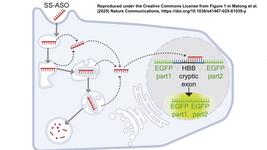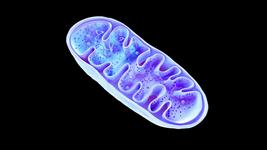CMN Weekly (25 November 2022) - Your Weekly CRISPR Medicine News
By: Gorm Palmgren - Nov. 25, 2022
Top picks
- Jennifer Doudna and co-workers have discovered that 0.4% of all phages encode CRISPR systems belonging to all six known CRISPR-Cas types. These include the new Casλ that recognizes double-stranded DNA using a uniquely structured CRISPR RNA (crRNA) and can induce genome editing in mammalian, Arabidopsis, and hexaploid wheat cells. The researchers believe that the viruses use CRISPR to compete with each other and manipulate gene activity in their hosts.
- American researchers have developed a method for drag-and-drop genome insertion of large sequences without double-strand DNA cleavage using CRISPR-directed integrases. The technique (PASTE, programmable addition via site-specific targeting elements) uses a CRISPR-Cas9 nickase fused to reverse transcriptase and serine integrase for targeted genomic recruitment and integration of desired payloads. The authors demonstrate the integration of sequences as large as ~36 kilobases at multiple genomic loci across three human cell lines, primary T cells and non-dividing primary human hepatocytes.
Research
- David Liu and co-workers have developed new compact zinc finger cytosine base editors that edit mitochondrial or nuclear DNA in vitro and in vivo. The small size of the all-protein base editors allowed for the packaging in a single AAV9 and precise editing. However, off-target editing is likely too high for therapeutic applications.
- Researchers at the Broad Institute have discovered that CRISPR therapies might only sometimes work as intended because people's genomes differ individually and by ancestry. This is particularly true for people of African descent who are more genetically diverse than Europeans or Asians. The researchers mapped ancestry-associated genetic cancer dependencies. They found that most putative associations between ancestry and dependency arose from artefacts related to germline variants present at different frequencies across ancestry groups.
Industry
- EdiGene announces completion of last patient dosing in phase I clinical trial of ET-01. ET-01 is an investigational gene-editing hematopoietic stem cell therapy for transfusion-dependent β-thalassemia (TDT) - a hereditary hemolytic anaemia disease.
- Caribou Biosciences announces FDA clearance of IND application for CB-011. CB-011 is a genome-edited allogeneic anti-BCMA CAR-T cell therapy with immune cloaking to treat relapsed or refractory multiple myeloma (r/r MM).
Detection
- A new method for the ultra-sensitive detection of microRNAs (miRNAs) has been developed by the integration of metal-organic frameworks (MOFs) based biobarcodes with CRISPR/Cas12a assay (designated as MBCA). As a result, MBCA could assess the expression of miR-21 in different cancer cells and differentiate breast cancer patients and healthy individuals by analyzing the target miRNAs extracted from serum samples.
- Chinese researchers have explored chemiluminescence resonance energy transfer (CRET) as the readout mode for CRISPR/Cas12a-based biosensing. In contrast to the commonly used fluorescence resonance energy transfer (FRET), CRET does not need external excitation light, which can effectively avoid autofluorescence and photobleaching. As a result, the researchers found that CRET can serve as a rapid, sensitive and straightforward readout mode of CRISPR/Cas12-based biosensing.
- CRISPR-Cas12a strategies for point-of-care molecular diagnostics are often compromised due to complex labelling, high cost, and low signal-to-noise ratio. Now, Chinese researchers demonstrate a pre-folded G-quadruplex (G4) structure with tunable tolerance to CRISPR-Cas12a trans-cleavage that allows for a label-free visible fluorescent strategy and "signal-on" colourimetric strategy. The method can detect nucleic acids from Group B Streptococci with a naked-eye limit of detection of 1 aM.
- Chinese researchers have developed an electrochemical biosensor for detecting Burkholderia pseudomallei - a soil and water-dwelling bacteria with mortality after infection of 20 to 50% even with treatment. The rapid and ultrasensitive sensitive method is based on CRISPR-Cas14a and exploits PtPd nanoparticle functionalized porphyrin metal-organic framework nanoenzymes (PtPd@PCN-224 nanoenzymes) as signal amplification tags.
- A new system for the rapid and sensitive detection of E. coli O157:H7 employs a combination of hybridization chain reaction and CRISPR/Cas12a called CHANCE (Cas12a-HCR evANescent wave fluorescenCE). The detection time is less than 50 min and a detection limit of 17.4 CFU/mL - both superior to qPCR.
- Researchers in China have developed a CRISPR-Cas14-based platform for the facile, sensitive and versatile aptasensing of diverse targets. The fluorometric biosensor is named HARRY (highly sensitive aptamer-regulated Cas14 R-loop for bioanalysis) and works opposite most other detection systems: In the presence of the target, ssDNA-target assembly is formed via aptamer interaction, resulting in the inhibition of Cas14a activation, while in the absence of the target, the ssDNA activates Cas14a so trans-cleavage of the fluorescent reporter causes fluorescence enhancement.
Reviews
- The genome of β-thalassemia patients can be modified using the CRISPR/Cas9 technique to treat their disease. A review by Iranian researchers highlights the three main approaches that have been taken: 1) increase the expression of γ-globin and production of haemoglobin F, 2) reduction of the α-globin chain to prevent hemolysis of red blood cells by the accumulation of excessive α-globins, and 3) correction of the mutations causing β-thalassemia.
Opinions
- German scientists discuss the research ethics issues in germline genome editing by exploring critical issues related to the initial applications of CRISPR in reproductive medicine. They outline the specific challenges associated with such interventions and the features that distinguish them from conventional clinical testing of new medical treatments. They also propose ethical requirements for initial heritable genome editing.
Webinars
- CRISPR Medicine News is hosting a free webinar entitled "Development of CRISPR-Cas9-based therapies against Alzheimer's disease" by Martin Ingelsson at the University Health Network in Toronto, Canada. The webinar goes live on Wednesday, 30 November, from 3:00 pm to 4:30 pm CEST.
To get more of the CRISPR Medicine News delivered to your inbox, sign up to the free weekly CMN Newsletter here.
Tags
CLINICAL TRIALS
IND Enabling
Phase I
Phase II
Phase III
Recurrent or Progressive High-grade Glioma, (NCT06737146)
Sponsors:
Suzhou Maximum Bio-tech Co., Ltd.
Sponsors:
Suzhou Maximum Bio-tech Co., Ltd.
IND Enabling
Phase I
Phase II
Phase III
Advanced Peritoneal Malignancies or Abdominal Metastatic Solid Tumors, (NCT06912152)
Sponsors:
Zhejiang University
Sponsors:
Zhejiang University
IND Enabling
Phase I
Phase II
Phase III







